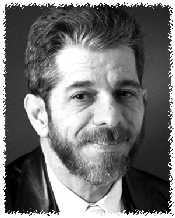What role should religious demographics play and what are the best sources for such demographics?

By Jeffrey Weiss
The Dallas Morning News
To answer this question, you need to start by considering two others: What do my readers want to know? What do they need to know?
What do they want to know? Most people want to know first about things that obviously affect them. But don’t sell your readers short. Many are reasonably curious about other folks.
What do they need to know? After Sept. 11, 2001, we need not harp on the need to understand many religions and cultures. Even the most insulated reader knows religion is not a local story. And education is part of our job.
All of that blends in because, despite all the chatter about American religious diversity, it isn’t necessarily so. In a roomful of 20 “average Americans,” 16 of them would say they were Christian, three would say they had no religion and only one would connect with any other faith.
That’s right. No more than 5 percent of Americans are either Jewish, Muslim, Buddhist, Baha’i, Sikh, Pagan or anything else you can think of. (Of course, as they say in the car business, your mileage may vary. There are parts of the country where minority faiths are a significant part of the population. And you’ll need to know that.)
But American Christianity is hardly a single entity. Pentecostal and Catholic, black, white or Hispanic, myriad flavors of Baptist-the nuances that divide these groups are often as important to members as their similarities.
Here in Dallas, we pay closer attention to the battles within the Southern Baptist Convention than, say, a Chicago paper would. But we also make sure we keep stories about Jews, Muslims, Sikhs, etc. as part of the mix.
And whenever we do an issues story, whether it’s about abortion or cloning or the role of faith in politics, we make sure that representatives of a variety of faiths and positions within particular faiths are represented. Not every group is quoted in every story. But over the course of coverage, pretty much every religious group we know about will find a place at some point.
Diversity can’t happen by accident. It’s got to be a part of your thinking about every story, every day. And it’s hard to do on deadline. So we maintain an extensive list of local, national and even international contacts that is indexed in a way that lets us easily pull a diverse selection.
So what is the mix of faiths in the world, in the United States and in your area? First realize that specific numbers are a crapshoot at best. Catholics baptize infants. Baptists wait until a child can understand what’s going on. Muslims and Jews have no central authority and no universally accepted way of counting members. That means there is no rigorous, apples-to-apples way of comparing these groups.
But we’re journalists, not social scientists. So what we can find is often good enough to suggest trends and the general relationship of one faith group to another.
Local numbers will only be found locally. Check with the regional denominational headquarters. And realize that good numbers may simply not exist. Don’t accept uncritically what local leaders offer. If it’s just a guess, report it as such. This is a particular issue with minority faiths.
For national or state figures, a good first stop is at Adherents.com, which bills itself as “a growing collection of over 41,000 adherent statistics and religious geography citations – references to published membership/adherent statistics and congregation statistics for more than 4,200 religions, churches, denominations, religious bodies, faith groups, tribes, cultures, movements, ultimate concerns, etc.”
The Yearbook of American and Canadian Churches, published yearly by the National Council of the Churches of Christ in the USA, is a widely respected source. And it’s available in print and online format.
In 2001, the Hartford Seminary released a national survey called “Faith Communities Today.” Seventeen religious groups were asked to count themselves. Clearly, there was incentive to exaggerate numbers. But many of the results turned out pretty close to other kinds of surveys. Just make sure you describe the methodology if you cite the survey. The full text and links to the faiths involved are at http://fact.hartsem.edu.
Also in 2001, City University of New York released its “American Religious Identification Survey.” This is the result of a phone survey of more than 40,000 people. Compare that with your average national political poll of about 1,000 people. But again: Phone surveys tend to undercount the kinds of people who are less likely to have phones or answer phone surveys: the poor, recent immigrants and non-English speakers. Find it online at http://www.gc.cuny.edu/studies/aris_index.htm.
